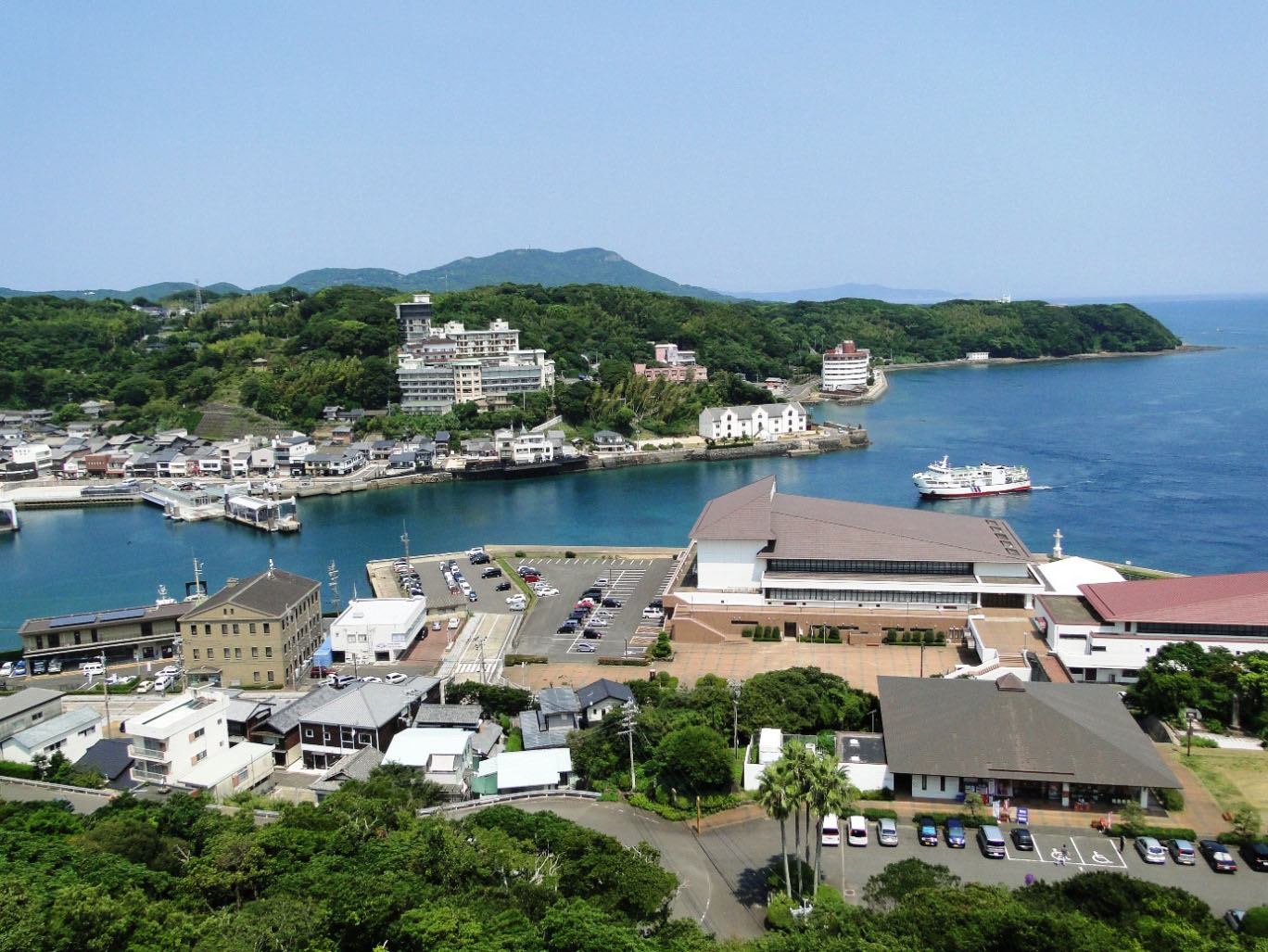The horn blast from the incoming ferry echoes clearly through the top-floor hall of Hirado Castle. From the donjon's vantage point, my husband and I can clearly see the large passenger ship as it enters the sheltered bay of Hirado's port, marking the end of its route between this small city on Nagasaki Prefecture's northwestern coast and the nearby island of Oshima. The ship may be different but it's not hard to imagine the Matsuura lords, former rulers of Hirado, with spyglasses pressed eagerly to their eyes as they watched the arrival of a European trading ship.
Most people associate Japan's early ties to the West with Dejima, the fan-shaped island in Nagasaki Bay that served as the trading post and "prison" for Dutch merchants during the years of the Edo Period (1603-1867) when the country was essentially closed to outsiders. Yet long before foreign visitors were sequestered behind Dejima's stout gates, they enjoyed a certain amount of liberty in the merchant town of Hirado, where trade between Japan and Western powers flourished in the late 16th and early 17th century.
The first foreign merchant ship to ply the waters around this craggy island just off Kyushu's coast was a Portuguese galleon that arrived in 1550. A few decades later, the Dutch East India Company claimed a piece of the action and in 1613 the British followed suit with their own trading post (the 400th anniversary of which is currently being feted in Hirado).



















With your current subscription plan you can comment on stories. However, before writing your first comment, please create a display name in the Profile section of your subscriber account page.